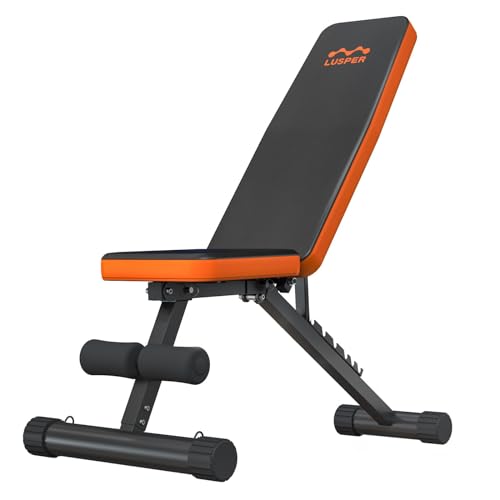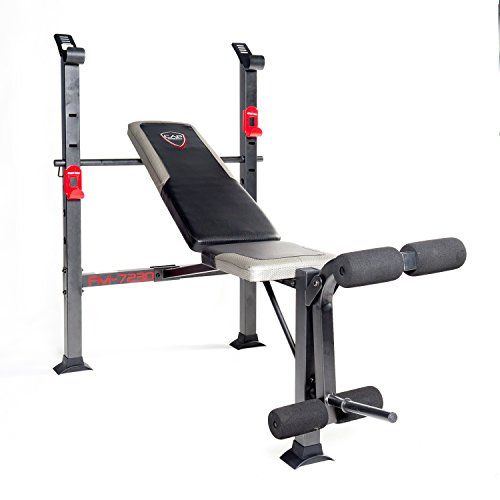When it comes to fitness, two of the most sought-after goals are building muscle size (hypertrophy) and increasing strength. Whether you’re an athlete, bodybuilder, or fitness enthusiast, focusing on both muscle mass and raw power ensures a well-rounded, functional physique. Not only does it improve aesthetics, but it also contributes to better performance, bone health, metabolism, and injury prevention.
If you're searching for the most effective ways to build size and strength, you've come to the right place. This article covers all essential strategies, techniques, and principles that will help you maximize your results and avoid plateaus.
Understanding Size and Strength Training
Before diving into practical methods, it's crucial to understand the difference and relationship between muscle size and strength:
-
Muscle Size (Hypertrophy): Refers to the increase in muscle fiber size through structured resistance training. Hypertrophy mainly results from progressive overload, metabolic stress, and muscle fiber damage.
-
Strength: The ability to exert force during an exercise. Strength gains stem from both increased muscle mass and improved neuromuscular efficiency, such as better motor unit recruitment.
By combining the right training methods, you can effectively achieve both size and strength gains simultaneously.
The Role of Compound Movements in Building Size and Strength
One of the foundational pillars of strength and size development is focusing on compound exercises. These multi-joint movements recruit multiple muscle groups at once, allowing you to lift heavier weights and stimulate muscle growth effectively.
Top Compound Exercises:
- Squats (Back & Front)
- Deadlifts
- Bench Press (Flat, Incline, Decline)
- Pull-Ups & Chin-Ups
- Overhead Press (Standing & Seated)
- Barbell Rows & Dumbbell Rows
By incorporating these compound movements into your routine, you can target large muscle groups such as the quads, hamstrings, glutes, back, chest, and shoulders, all essential for adding size and improving strength.
Progressive Overload: The Key to Continuous Gains
To build muscle size and strength, your body must be continually challenged. This concept is known as progressive overload, gradually increasing the stress placed on your muscles over time. Progressive overload can be achieved in several ways:
- Increasing weight lifted
- Increasing repetitions
- Adding more sets
- Reducing rest periods
- Enhancing range of motion
- Controlling tempo (slowing down eccentric movements)
Without progressive overload, your muscles adapt, and growth stagnates.
Training Volume, Intensity, and Frequency for Maximum Gains
Three core principles must be balanced to build size and strength effectively:
1. Training Volume (Sets x Reps x Weight)
Higher training volume contributes significantly to hypertrophy. Aim for 12-20 sets per muscle group per week, ensuring enough workload to promote growth without overtraining.
2. Training Intensity (Percentage of 1RM)
- For strength: 80-90% of your 1-rep max (1RM), focusing on lower reps (3-6 reps per set).
- For hypertrophy: 65-80% of your 1RM, targeting moderate reps (8-12 reps per set).
3. Training Frequency
Research shows that training each muscle group 2-3 times per week yields optimal results for both size and strength. Split routines like Upper/Lower Splits or Push/Pull/Legs allow for sufficient volume and frequency.
Importance of Time Under Tension (TUT)
Another overlooked factor is Time Under Tension (TUT), how long a muscle is under strain during a set. Increasing TUT leads to greater metabolic stress and muscle fiber recruitment, driving hypertrophy.
Recommended tempo:
- Eccentric phase (lowering weight): 3-4 seconds
- Pause at bottom: 1 second
- Concentric phase (lifting weight): 1-2 seconds
This approach prevents rushing through reps and ensures muscles are adequately stimulated.
Incorporating Accessory Movements for Balanced Development
While compound lifts are the cornerstone of size and strength, accessory exercises are crucial for targeting weak points, improving stability, and enhancing muscle symmetry.
Effective Accessory Exercises:
- Lateral Raises (Shoulders)
- Bicep Curls (Arms)
- Tricep Dips (Arms)
- Face Pulls (Shoulder & Upper Back Health)
- Glute Bridges (Glutes & Hamstrings)
- Calf Raises (Calves)
Accessories support the main lifts and prevent muscular imbalances.
Periodization: Structured Training for Continued Progress
Periodization refers to systematically varying your training variables (volume, intensity, frequency) over time to avoid plateaus and reduce injury risk.
Popular Periodization Models:
- Linear Periodization: Gradually increase intensity over several weeks while reducing volume.
- Undulating Periodization: Frequently change intensity and volume from session to session.
- Block Periodization: Separate blocks focus on hypertrophy, strength, or power phases.
Periodized programs ensure long-term progress and prevent stagnation.
Nutrition: Fueling Size and Strength Gains
Your training efforts won’t pay off without the right nutrition strategy.
Key Nutritional Guidelines:
✔ Caloric Surplus: Consume 10-15% more calories than maintenance to build muscle mass.
✔ Protein Intake: 1.6-2.2 grams per kilogram of body weight daily. Essential for muscle repair.
✔ Carbohydrates: Provide the energy needed for intense strength sessions. Target 3-6 grams per kg/day.
✔ Healthy Fats: Support hormone production (including testosterone). Consume 0.8-1.0 grams/kg/day.
Sample high-protein foods:
- Chicken breast
- Salmon
- Greek yogurt
- Lean beef
- Protein shakes
- Eggs
Carbohydrate sources:
- Brown rice
- Sweet potatoes
- Oats
- Fruits
- Whole grains
Healthy fats:
- Avocados
- Nuts and seeds
- Olive oil
- Fatty fish
Hydration and Its Role in Muscle Growth
Dehydration leads to reduced performance, muscle cramps, and slower recovery. Drink at least 3-4 liters of water daily, and more if performing intense workouts or training in hot environments.
For longer workouts, replenish electrolytes to maintain performance and prevent fatigue.
Rest, Recovery, and Sleep: Essential for Growth
Muscles grow during rest, not during workouts. Ignoring recovery increases injury risk and delays progress.
Optimal Recovery Strategies:
✔ Sleep 7-9 hours per night for proper muscle repair.
✔ Take 1-2 rest days per week.
✔ Incorporate active recovery (light cardio, stretching, yoga).
✔ Utilize foam rolling, massages, and mobility work to aid recovery.
Supplements to Support Size and Strength Goals
While not mandatory, the following supplements are well-researched and effective:
✔ Whey Protein: Convenient protein source for post-workout recovery.
✔ Creatine Monohydrate: Increases ATP production, enhancing strength and power output.
✔ Beta-Alanine: Buffers muscle fatigue during high-rep training.
✔ Branched-Chain Amino Acids (BCAAs): Aid in muscle recovery (optional if protein intake is sufficient).
✔ Multivitamins & Omega-3s: Support overall health and reduce inflammation.
Common Mistakes Hindering Size and Strength Progress
❌ Lifting Too Heavy Without Proper Form: Increases injury risk without stimulating growth effectively.
❌ Neglecting Compound Movements: Prioritizing isolation over foundational lifts.
❌ Skipping Recovery Days: Leads to overtraining and stalled progress.
❌ Inconsistent Nutrition & Hydration: Failing to fuel workouts adequately.
❌ No Progressive Overload Strategy: Doing the same routine without increasing stress on muscles.
Tracking Progress and Making Adjustments
Monitoring your workouts, body composition, and strength levels ensures you stay on track:
✔ Log every workout (weights, reps, sets).
✔ Track body measurements monthly (arms, chest, waist, thighs).
✔ Take regular progress photos.
✔ Adjust caloric intake and training variables every 4-6 weeks based on results.
Building Size and Strength Requires Strategy and Consistency
Increasing muscle size and strength is not about lifting the heaviest weights once or randomly eating more, it’s about following structured training programs, proper nutrition, recovery, and applying progressive overload consistently over time.
By incorporating the principles outlined in this article, compound movements, optimal rep ranges, balanced nutrition, recovery strategies, and tracking progress, you’ll be well on your way to achieving serious size and strength gains.
💪 Ready to transform your physique and performance? Start implementing these methods today and watch the results follow!







